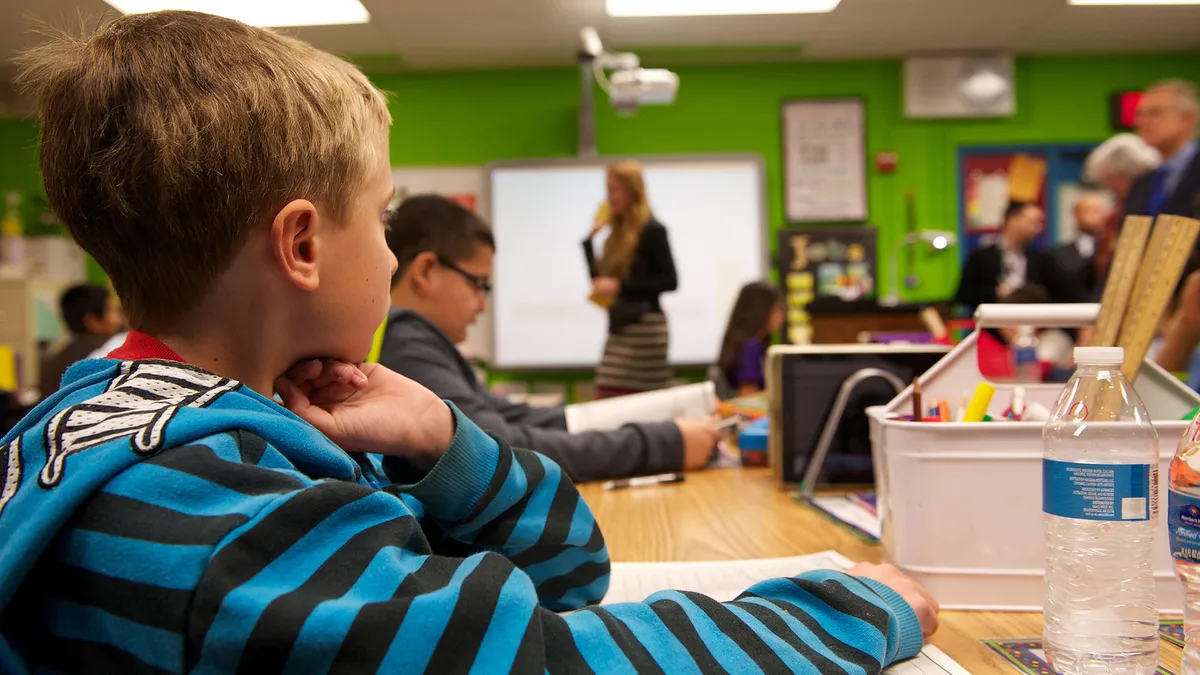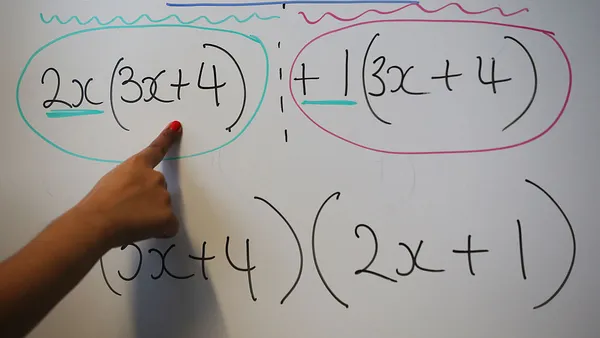Dive Brief:
- Students who ask teachers if they’re ever going to use what they’re learning actually reveal their critical thinking skills, Wisconsin high school English language arts teacher Anna Mae Tempus writes for Edutopia.
- Tempus designs classroom activities with that question from students in mind, even making sure to tell students that they are learning, in some cases, adult skills. For instance, she says, in sorting organisms during biology class, students are learning how to stay organized — a valuable skill to have as adults.
- Tempus believes it’s not difficult to find a real-world application for any academic lesson: Students can be told how calculating the area of a geometric shape may help a house painter, or that arranging animals into biological sequences also develops life-long organizational skills.
Dive Insight:
Context — the understanding of how something connects to a whole — is never more crucial of a concept than within the sphere of K-12 education. Students need to be shown that what they’re learning is more important than getting a higher score on a standardized exam. Administrators and curriculum designers who fail to help students understand not just the what of their lessons, but the why, are in danger of their pupils tuning out during class time.
When students see how lessons can impact their future, they see the purpose of their education. That real-world learning connection is rewarding on a number of levels, whether students see how the future may look or how they can actually apply these skills today.
That’s exactly what 5th-graders at the National Inventors Hall of Fame STEM Middle School in Akron, Ohio, experienced when designing a new tween space as part of their STEM curriculum at school. Students developed tools in the classroom that they were able to take outside into their community.
Curriculum administrators can make sure they bring real-world applications into the classroom by keeping them in mind as they’re developing lessons, and even procuring resources, for a school or district. Part of that planning could include reaching out to community members as districts search for potential projects to bring into classrooms — even perhaps a duck that is need of a prosthetic foot.
Educators too may need some retraining and professional development so they can learn how to frame curriculum. The goal is to teach students not just the lesson of the day, but how the knowledge they walk out the classroom with can serve them in the future.












